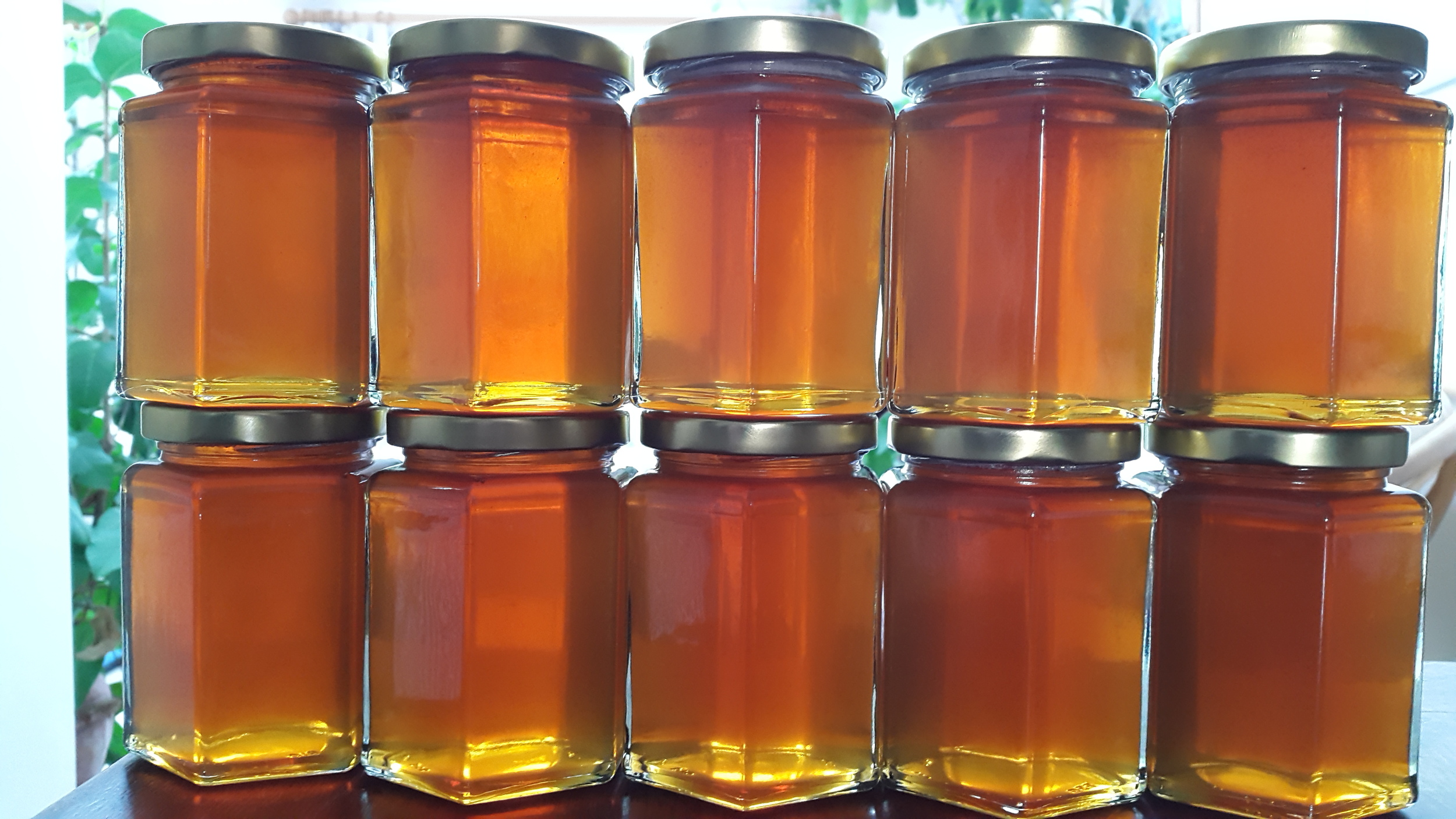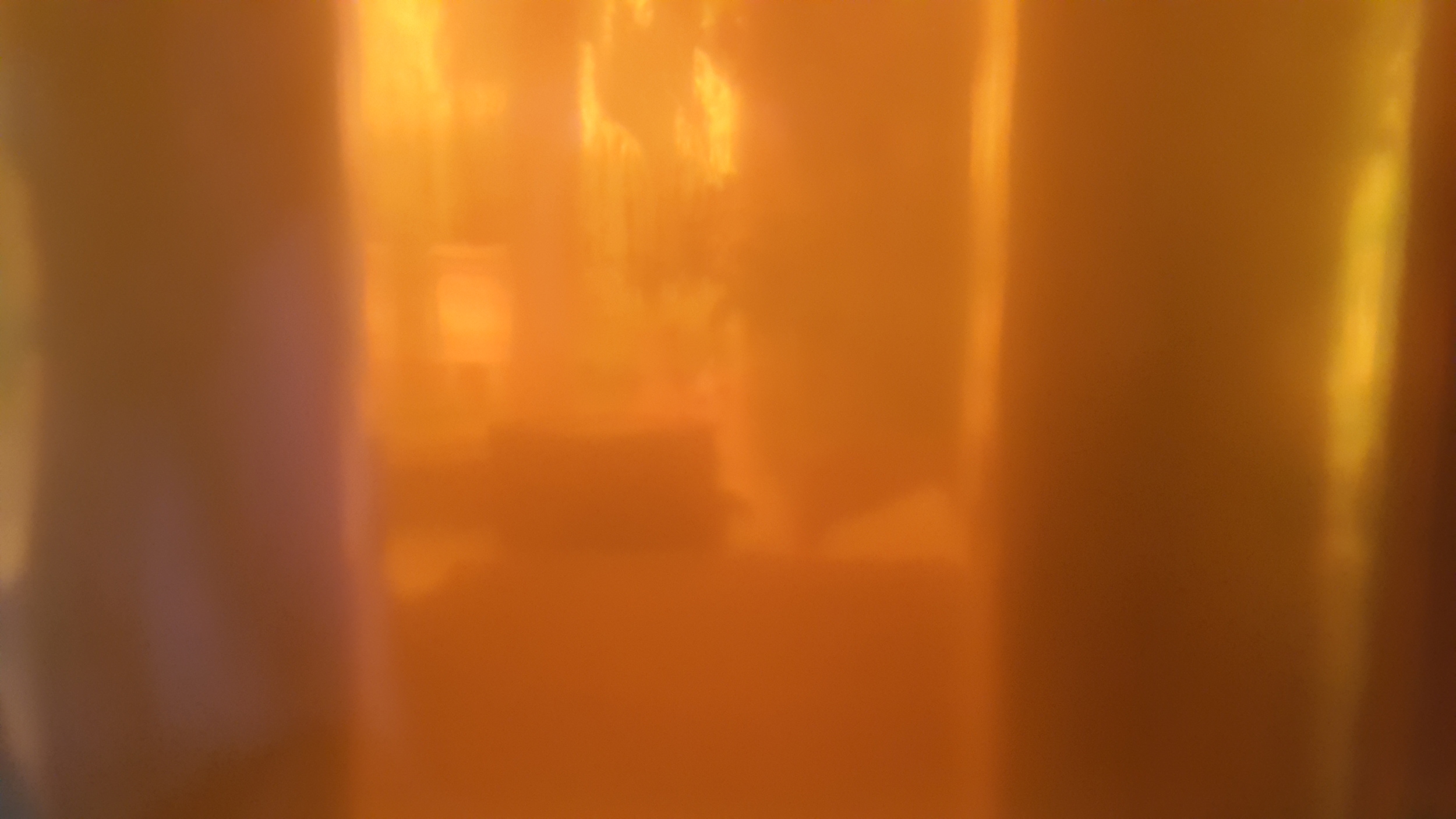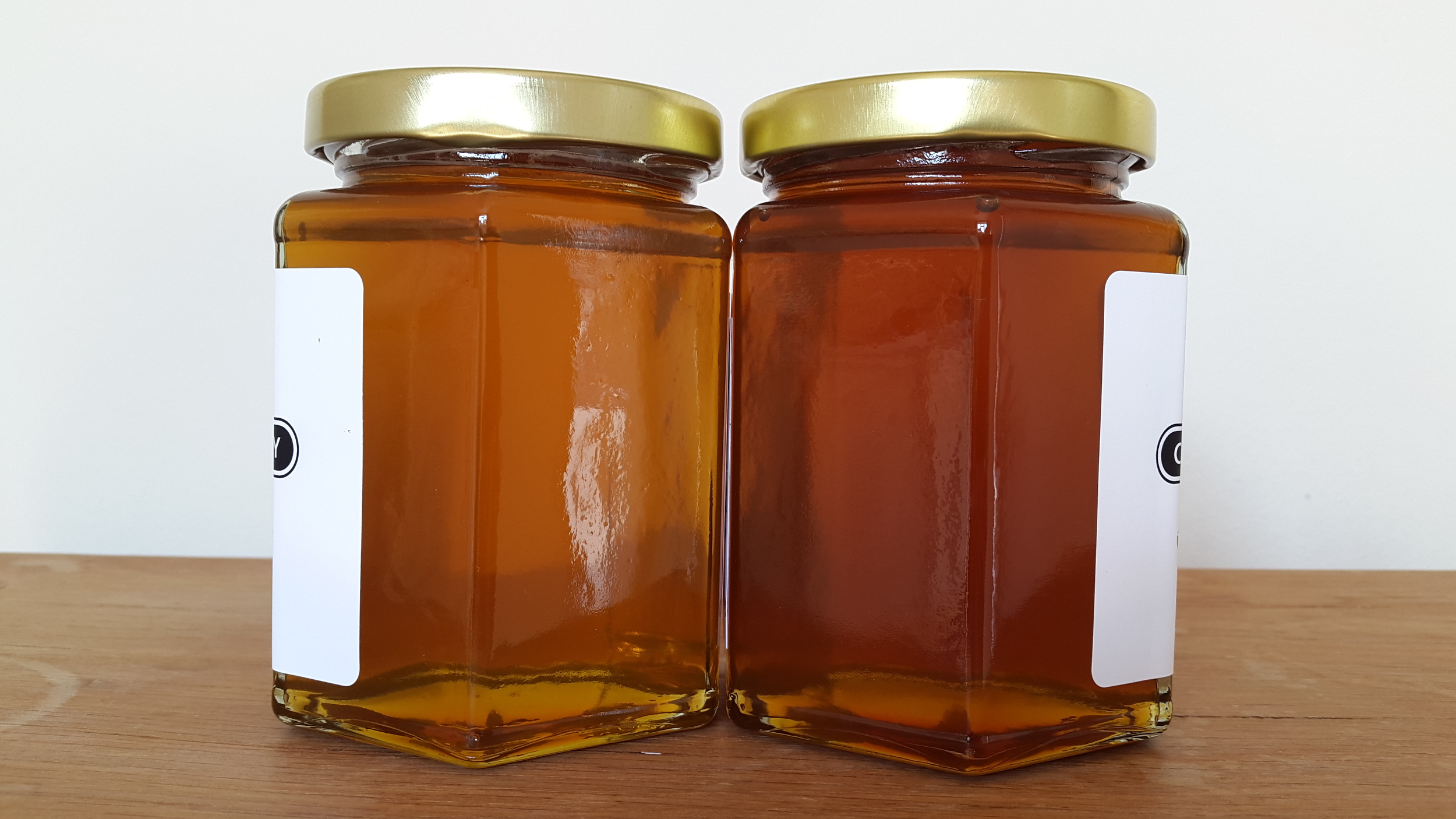Propolis is the reddish brown sticky resin that bees stick things together with, bung up gaps with, and strengthen wax with. Apparently they collect it from trees. I have seen propolis foragers in the hive - on their rear legs where the pollen basket is they have a dollop of propolis like a bead of glue.
One of the wonderful things about propolis is its scent. It is ylang ylang, vanilla, a pine forest on a hot day, and a glass of mulled wine. And it emits a toasted version of these scents when burnt with a blowtorch, which enlivens the task of sterilising a second hand hive or flame-cleaning a queen excluder.
Propolis is said to have antiseptic qualities. So when cleaning the Smith Hive in preparation for storage, I decided to "harvest" the propolis off it and make a tincture.
Except, I didn't get round to it for a couple of weeks. The propolis scratchings stayed in their jug at the back of the fridge, covered in cling film. Today I went back to it. In the history of science, this is how serendipitous discoveries are made. What I discovered is: propolis doesn't smell so good after it's been in the fridge for a couple of weeks. The heady and complex scent that I raved about above had changed - vanilla was still there, perhaps more so, but now it had taken on a sickly creaminess. My nose was disappointed.
Anyway, this meant there was less to lose by experimenting with tinctures. I poured vodka (40 % abv) into the jug. Not much happened. The propolis didn't dissolve. A few bits of dried grass and beeswax separated out and floated to the top. The propolis stayed at the bottom. The vodka turned slightly yellow.
A cautious sip...the taste is initially earthy, and there's the ylang ylang, then an after-taste reminiscent of plasticine. Not as bad as I feared. I shall leave it to develop in the jug for another couple of weeks and we'll see what happens.
I hope I never become blasé about seeing Queens
Read More
As pictured here, you can see that the garden is a mess, but we enjoy a nice Sunday breakfast watching the bees.
It is late Summer and the availability of forage in the garden (for the bees at least) is reducing, but there are still some flowers around. The bees' favourite thing is the Echinops:
And they continue to forage on the remaining raspberry flowers, but most of those are now turning to fruit:
The bees are on watermint:
This forager was collecting pollen from a Japanese anemone. Look at that nice full pollen basket:
The Smith bees made this honey during the second half of July and the beginning of August. It's different from the earlier honey. Similarly runny, but darker, and with a rounded silky taste. Imagine olive oil and chocolate.
There were swathes of thistles flowering on Stourbridge Common at the time this honey was being made, so I think there must be a good proportion of thistle honey in here.
We extracted 4 frames, which filled 10 jars. The other frames were not fully capped, and have been returned to the bees.
There are a lot of confused bees flying around the gin terrace looking for their hive, which isn't where they left it.
The Smith beehive has served us well, but it has a design flaw - there is too much surface contact between some of the parts, which increases the risk of crushing bees between moving parts and prompts the bees to apply large amounts of propolis to seal the surfaces together. I'm taking the Smith Hive out of service, and will keep it in reserve as a spare.
So today I moved the Smith colony to the (previously empty) Cedar Hive, in an adjacent position. In fact it's not quite the full Cedar Hive yet, but the bottom of the Cedar Hive combined with the top of the Smith Hive, like this:
The idea is this:
- The brood, with the majority of house bees, some flying bees and hopefully the queen are now in the Cedar brood box;
- They have a part-filled super above them, which they can continue to fill with honey in preparation for Winter;
- Above that is the clearer board, which acts as a valve, allowing bees downwards but not upwards;
- Bees from the Smith Hive sections above the clearer board will move overnight into the Cedar hive sections below the clearer board;
- If Queen Eve was on the inside wall of the brood box when I removed the frames (lots of bees were), she will travel down overnight and end up in the Cedar super (ok this is not ideal, but better than losing her altogether);
- Most of the other bees from the Smith Hive that were on the walls will also move down through the clearer board overnight;
- Tomorrow the parts of the hive above the clearer board will have very few bees in, and I will take them off and replace them with the Cedar crownboard and Cedar roof. This includes a full super of honey, which can be taken for extraction.
Flying bees are oriented to the previous location of the Smith Hive, which isn't there any more. It's not far away, but nor is the Disc Hive:
I expect the flying bees to redistribute between the Cedar Hive and the Disc Hive. This will boost the numbers of the small colony in the Disc Hive...it may help that colony, at least I hope it will not harm them. One worker is Nasonov fanning (emitting a homing signal) at the entrance to the Cedar Hive, while there is no sign of this at the Disc Hive entrance...it may help the ex-Smith flying bees find their own colony.
Was the move a stingless operation? Not quite. In lifting the Smith brood box off its floor I trapped a bee between the inside of my knee and the outside wall of the brood box. Of course, she stung me.
I don't know yet whether this has been a successful move. I think it has, but there were probably mistakes I made. Hopefully I'll find out in due course what they were. I didn't see Queen Eve, though I didn't check every frame thoroughly, just looked over them briefly when transferring them across. More worrying is that I did not see eggs or young larvae either. I hope it is just a sign that the colony is shrinking rather than that the Queen is no longer in residence. It would be useful if they could fly a flag like Buckingham Palace does.
Regular readers (hello Mums!) will be keen to know the status of the Disc Hive, following the untimely loss of Queen Gretchen.
So here's the news: WE HAVE A QUEEN!
A quick look at the central brood frame told me all I needed to know. There was already a large patch of sealed worker brood on each side of the frame, and unsealed brood too. Hooray! The bees have made things right all by themselves, without (or perhaps despite) me.
May Queen Honey's reign be long and prosperous.























